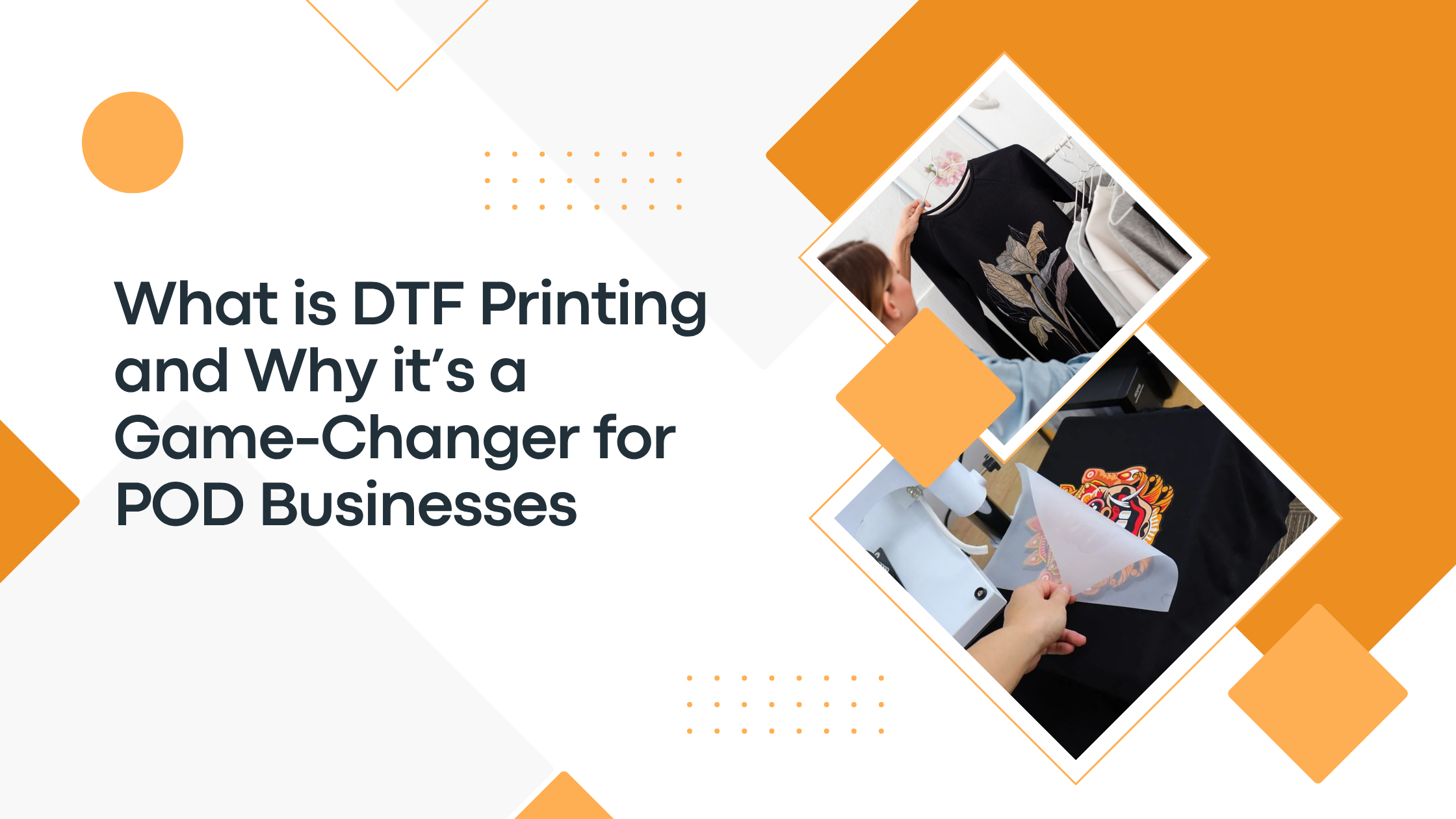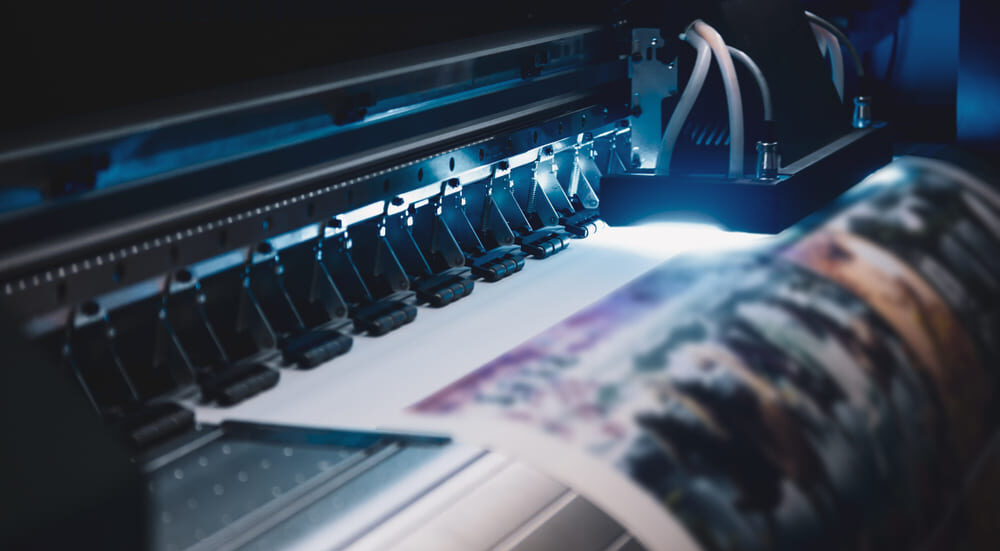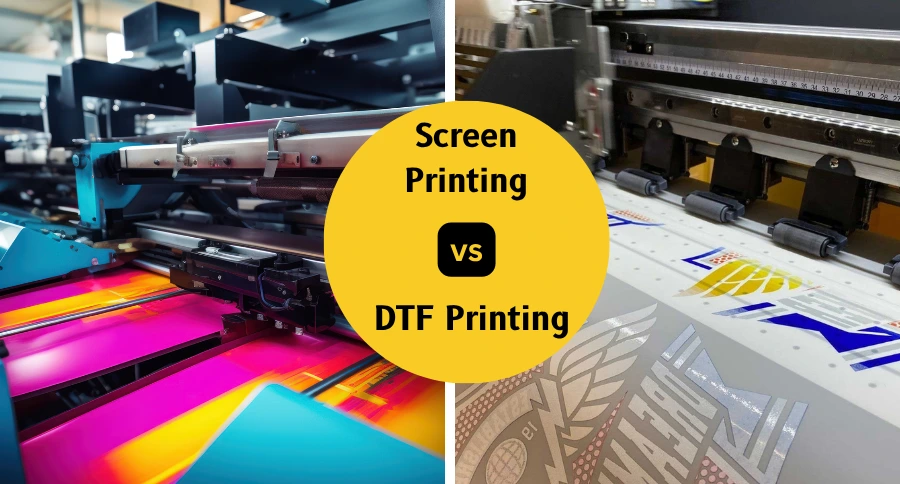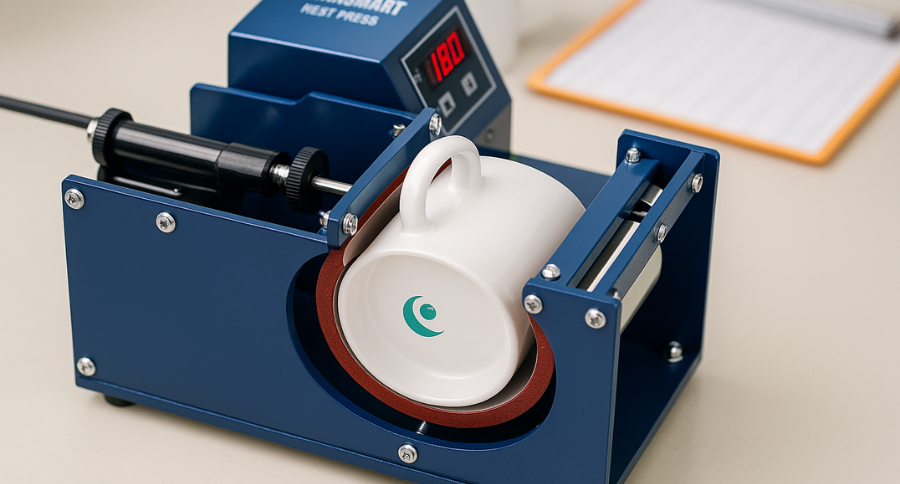Introduction
In 2025, DTF Printing (Direct-to-Film) is emerging as a revolutionary method for print-on-demand (POD) businesses. It allows entrepreneurs to produce high-quality, full-color designs on various fabrics without the limitations of traditional printing.
It combines versatility, cost-effectiveness, and speed, making it ideal for POD brands looking to scale while offering unique, personalized products.
This guide explains what DTF Printing is, how it works, its advantages, and why it’s becoming a game-changer for custom apparel businesses.
1. What is DTF Printing?
DTF Printing is a process where designs are printed onto a special transfer film, then heat-pressed onto fabric. Unlike traditional methods, it doesn’t require screens or extensive setups.
Key Features:
- Full-color printing with intricate details.
- Works on cotton, polyester, blends, and specialty fabrics.
- Ideal for small batches or one-off custom designs.
Industry Insight: Many POD brands now prefer DTF Printing for limited-edition drops, personalized items, and products with gradient colors or fine details.
2. How DTF Printing Works
The process involves four main steps:
- Design Creation: Use software like Adobe Illustrator, Photoshop, or Procreate to create high-resolution designs.
- Printing on Film: The design is printed on a special PET film using DTF ink.
- Powder Adhesive Application: A heat-sensitive adhesive powder is applied to the printed film.
- Heat Transfer: The design is transferred to fabric using a heat press.
This method ensures vibrant colors, durability, and the ability to print on multiple fabric types.
3. Advantages of DTF Printing
1. High-Quality Prints:
- Supports gradients, shadows, and detailed illustrations.
- Produces a soft hand-feel that is comfortable for apparel.
2. Fabric Versatility:
- Works on cotton, polyester, nylon, blends, and even specialty fabrics.
3. Cost-Effective for Small Batches:
- No screen setup costs.
- Perfect for personalized or limited-edition products.
4. Quick Turnaround:
- Faster than traditional screen printing for small orders.
- Enables POD brands to meet customer demand efficiently.
5. Eco-Friendly Options:
- Water-based DTF inks reduce environmental impact compared to plastisol inks.
Example: A POD brand producing gamer t-shirts used DTF Printing to create detailed character designs, which would have been impossible with screen printing.
4. DTF Printing vs. Traditional Methods
Screen Printing:
- Best for bulk orders with simple designs.
- High setup cost for multiple colors or small batches.
Sublimation Printing:
- Works mainly on polyester or coated surfaces.
- Limited to light-colored fabrics.
DTF Printing:
- Works on almost any fabric.
- Supports small or large orders.
- Ideal for detailed, colorful designs.
Industry Insight: POD businesses increasingly combine DTF Printing with other methods to offer both bulk and customized products efficiently.
5. Why DTF Printing is a Game-Changer for POD
Customization at Scale:
- Easily create personalized t-shirts, hoodies, or accessories without extra costs.
Flexibility for Entrepreneurs:
- No need to invest heavily in screens or large inventories.
- Small brands can compete with established players by offering unique designs.
Faster Time-to-Market:
- Quick setup allows brands to respond to trends immediately.
- Example: Limited-edition drops or seasonal collections can be launched within days.
Opens New Product Categories:
- DTF Printing works on a wide range of products like tote bags, caps, jackets, and more.
6. Tips for Successful DTF Printing
- High-Resolution Designs: Ensure designs are crisp and detailed for the best results.
- Proper Fabric Selection: Test new fabrics for adhesion and color accuracy.
- Quality Control: Inspect prints for consistency and durability.
- Optimize Transfer Process: Adjust heat press temperature and pressure for different materials.
- Sustainability: Use eco-friendly DTF inks to appeal to conscious consumers.
Example: A POD brand creating eco-friendly custom t-shirts used DTF Printing with water-based inks and organic cotton, attracting repeat customers who value sustainability.
7. Case Studies
Case Study 1:
A POD streetwear brand used DTF Printing to produce limited-edition graphic hoodies. The high-quality prints attracted attention on Instagram, leading to sold-out collections in 48 hours.
Case Study 2:
A small business offering personalized family t-shirts adopted DTF Printing for small batch orders. They increased repeat sales because customers loved the detailed, soft-touch prints.
Trend Insight 2025: Brands leveraging DTF Printing for small batches and personalization gain higher customer satisfaction and loyalty compared to bulk-only brands.
8. Challenges and Considerations
- Equipment Cost: DTF printers and heat presses require an initial investment.
- Skill Learning Curve: Proper handling ensures color accuracy and durability.
- Maintenance: Regular cleaning of printers and films is necessary for consistent quality.
Tip: Start with small batches, learn the process, and gradually scale production.
Conclusion
DTF Printing is transforming the POD industry by offering flexibility, quality, and speed. It allows brands to produce small batches, detailed designs, and personalized products without high setup costs.
Actionable Takeaways:
- Use DTF Printing for intricate, full-color designs.
- Test fabrics and inks for best results.
- Offer personalized or limited-edition products to increase engagement.
- Combine DTF with other printing methods for a diverse product range.
- Stay updated with 2025 trends, like eco-friendly inks and sustainable fabrics.
By adopting DTF Printing, POD entrepreneurs can deliver unique, high-quality products that appeal to modern consumers and scale their business efficiently.
Start creating today!
Visit https://teeprints.in/printing-services/#dtfprinting or DM us on Instagram @teeprints.in to place your first order.






